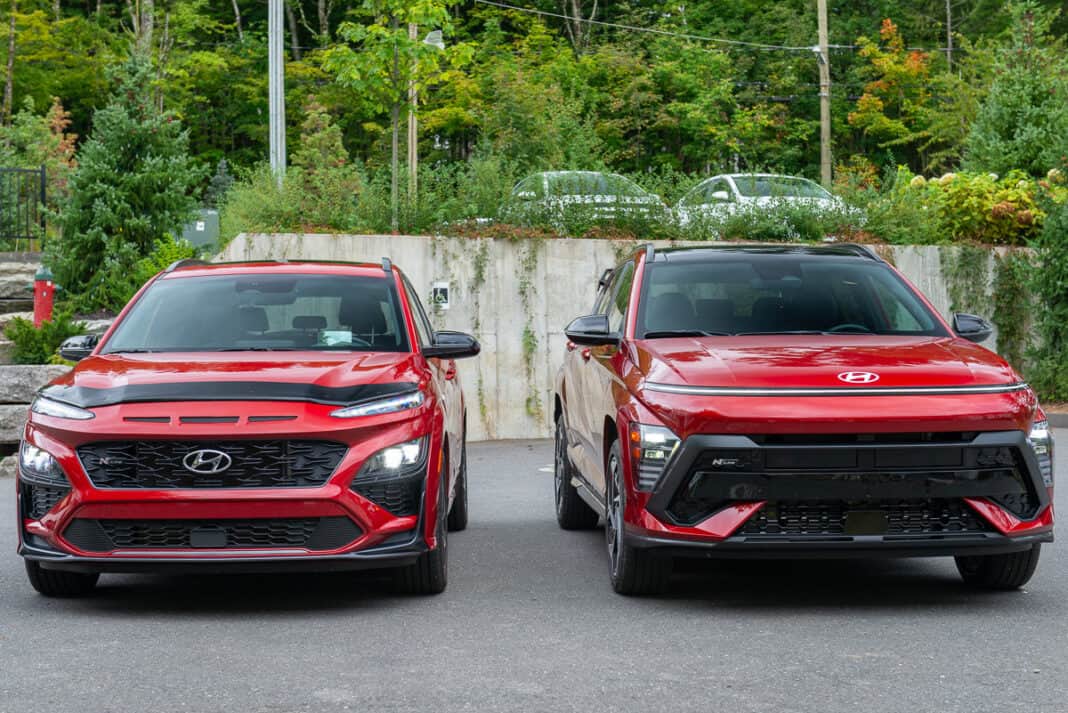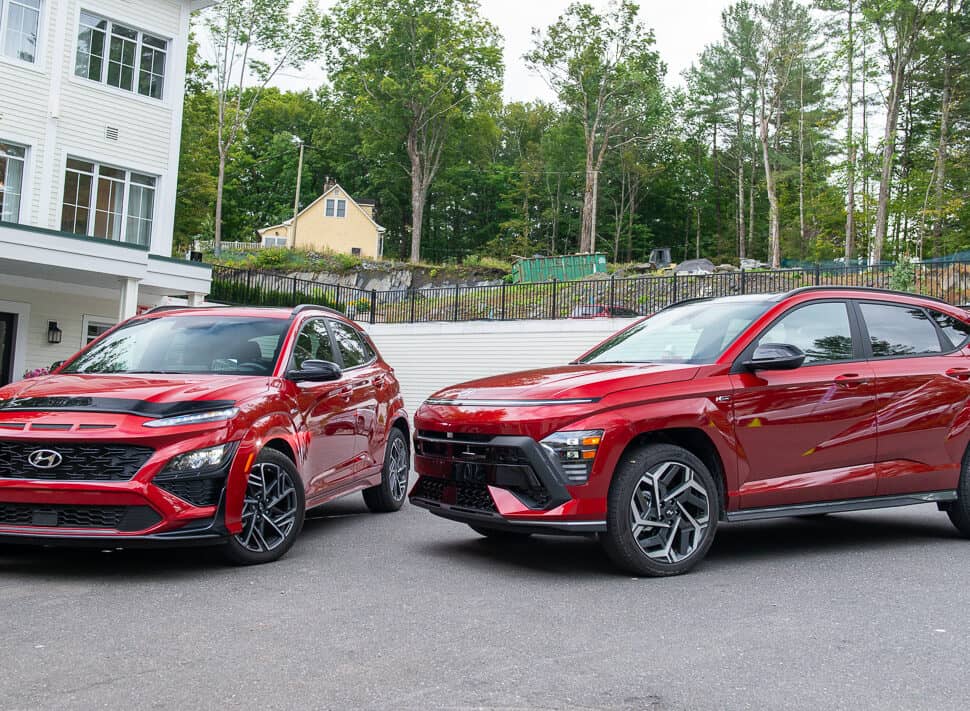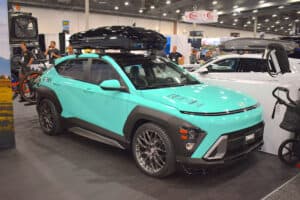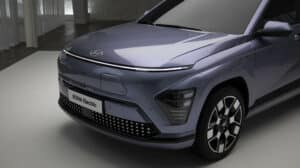Considering how popular the small, nimble subcompact crossover is nowadays, it’s no surprise that the Kona is one of Hyundai’s best-selling vehicles.
First arriving in 2018, the Kona received an overhaul in 2022 with suspension updates, an improved version of Hyundai Bluelink, the introduction of the sportier N-Line trim, and, of course, the first-ever Kona N model boasting 276 horsepower (unfortunately, no longer in production).
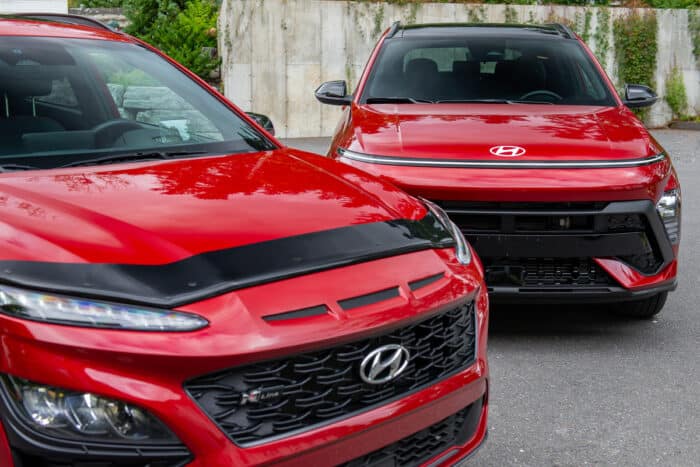
For 2024, the Hyundai Kona enters its next generation with a complete redesign inside and out — plus an all-electric Kona Electric arriving in early 2024 with an estimated range of 260 miles or around 420 km.
So, is it worth buying the 2024 model if you’re shopping for a Kona? Or stick with the outgoing 2023 variant? Here’s a look at the differences you should know about. In this article we’ll cover:
- Interior differences and dimensions
- Exterior design and dimensions
- Performance compared
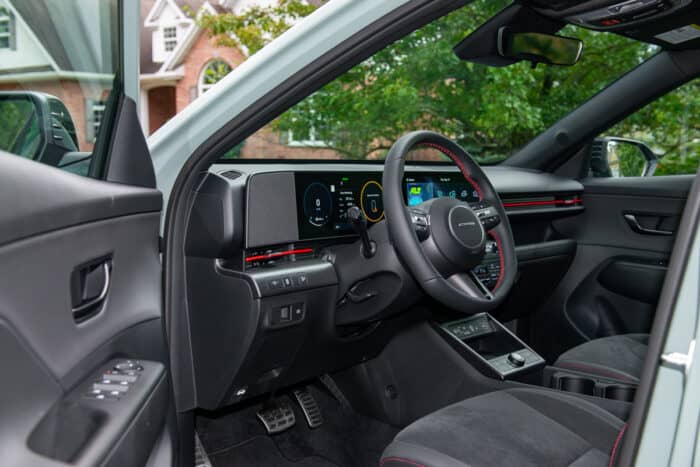
New Kona Interior: bigger screen, more volume, larger storage areas, and extra cargo space
Summary of 2024 Kona interior updates:
- Larger 12.3-inch touchscreen (standard)
- 33-percent extra rear trunk space
- Increased rear passenger legroom (extra 77mm)
- Large front dashboard storage
- Larger centre console storage area


Overall, when we look inside the 2023 Kona N-Line versus the 2024 Kona N-Line, the newer variate is cleaner and more streamlined. Small things like the absence of the ‘H’ on the steering wheel look better; the centre cupholders have a better layout and more efficient storage with the eliminated gear shifter; and the large round vents are gone in place of flat panels. It all looks tighter and more innovative.
In terms of interior real estate, Hyundai managed to expand the new Kona’s cabin space. Rear passengers now gain an extra 77mm of legroom.


Above all, in our view, the 33-percent improvement in rear cargo capacity is a major improvement. Anytime a subcompact crossover gains more space in the truck, it’s a good thing — and just another reason not to jump up to a bigger and pricier compact crossover.
Up front, there’s now a nifty multi-use centre console in the middle. This storage area is larger than ever to stash those small items. The dashboard, passenger front-and-centre, also gains a large cavity for extra storage for smaller things like phones, wallets, and keys.
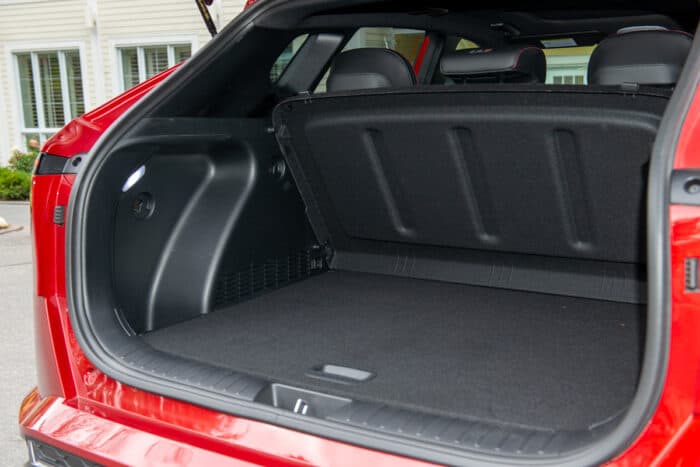
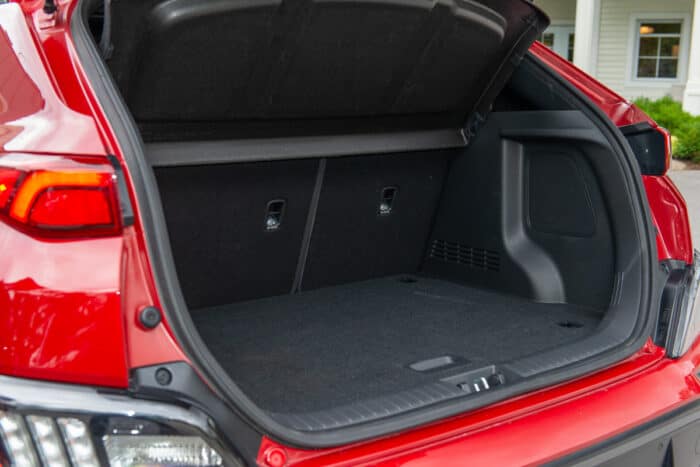
Interior dimensions: 2023 Kona vs. 2024 Kona
Here’s a look at the exact specs:
| 2023 Kona | 2024 Kona | Change | |
|---|---|---|---|
| Headroom (F/R) | F: 965 R: 961 | F: 974 R: 972 | +9/11 |
| Legroom (F/R) | F: 1,054 R: 893 | F: 1,059 R: 970 | +5/77 |
| Shoulder room (F/R) | F: 1,410 R: 1,385 | F: 1,443 R: 1,402 | +33/17 |
| Cargo Volume (L) | 544 | 723 | 179 |
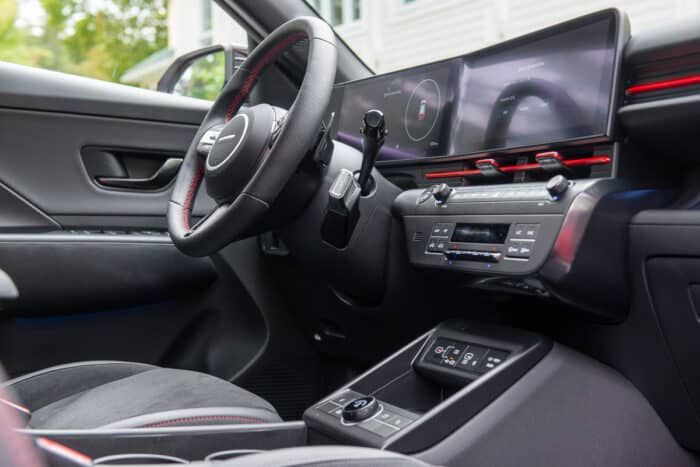
A larger touchscreen for 2024
You can’t have a redesign without more giant touchscreens inside. The 2024 Kona is no exception, now gaining a 12.3-inch touchscreen as standard, replacing the not-big-enough 10.25-inch.
Of course, the processing speeds are now faster as well. We don’t know what this means, but for those of you who do: the UFS now offers 2.5x faster duplex access; the dual band is more accurate; DMIPS improves from 15K to 64K, and GFLOPS go from 42 to 650. There you have it.
Regarding styling inside, the new Kona takes on a more driver-oriented approach.
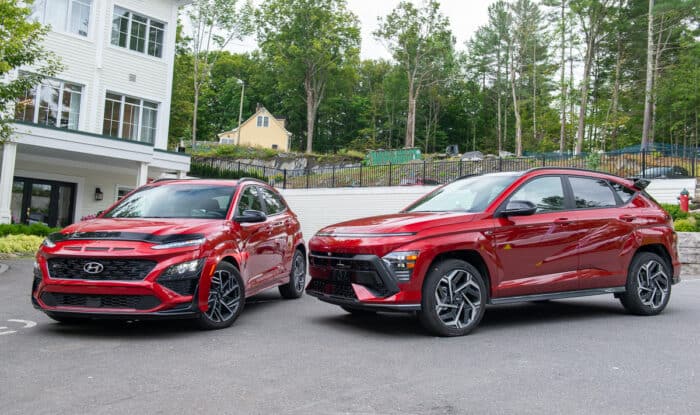
Kona Exterior Dimensions Grow in All Directions
Summary of 2024 Kona changes:
- Length is now 171.3 in., 5.7 in. longer
- Wheelbase of 104.7 in., a 2.3 in. increase
- Width is 71.9 in., a full inch wider
It’s tough to tell by just looking at it, but the 2024 Kona’s dimensions are significantly larger across the board compared to the 2023 Kona. The model grows in all directions:
| Spec | 2023 Kona | 2024 Kona | Change |
|---|---|---|---|
| Length (mm) | 4,205 | 4,350 | 145 |
| Width (mm) | 1,800 | 1,825 | 25 |
| Height (mm) | 1,565 | 1,610 | 45 |
| Wheelbase (mm) | 2,600 | 2,660 | 60 |
New Kona Looks
Summary of changes to 2024 Kona:
- Body-cladding on entry-level models (colour-matched on top trims)
- More ‘parametric’ surfacing on the sides
- Chrome mouldings from belt line to spoiler
- Front LED DRL
- Wider stance
- Rear single-strip LED lighting
- Chrome tailgate integrated into rear spoiler
- Lower bumper design
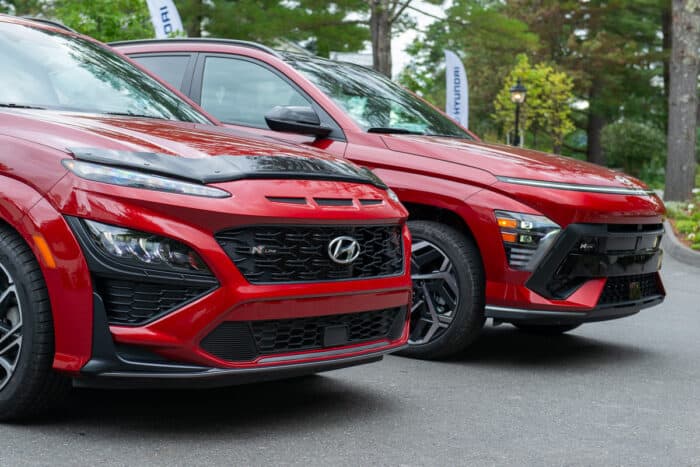

The first thing you’ll notice is the completely reworked front end — particularly that long, super-slender LED DRL running across the upper grill. We love how it looks, completely replacing the 2023 Kona’s previous look with something more futuristic, sleek, and stylish.
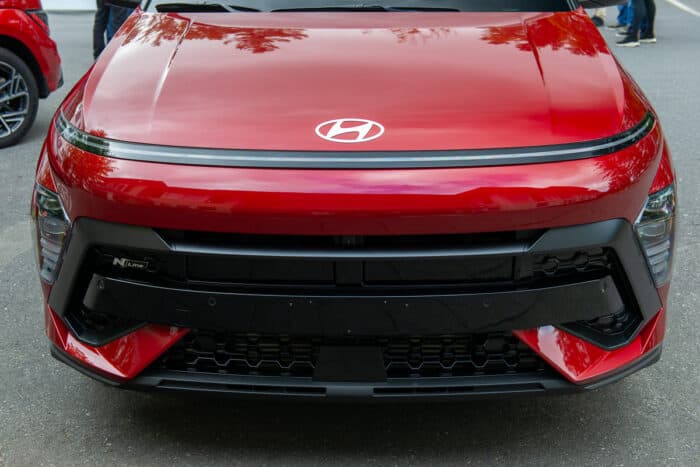
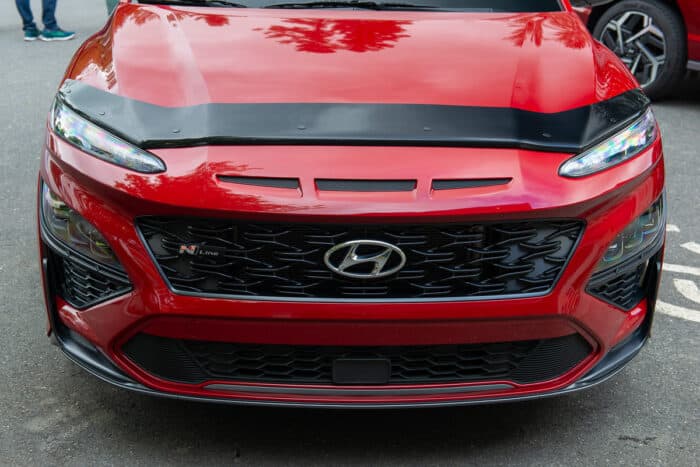
At the back, the taillight also gains the thin, horizontal LED light treatment. These east-to-west design treatments all work with the new Kona’s wider stance and more rugged guise.
The entry-level 2024 Kona models gain more black body cladding as well. If you’re not a fan of this, the higher trims get body-coloured treatments, as in the red N-Line models you see here.

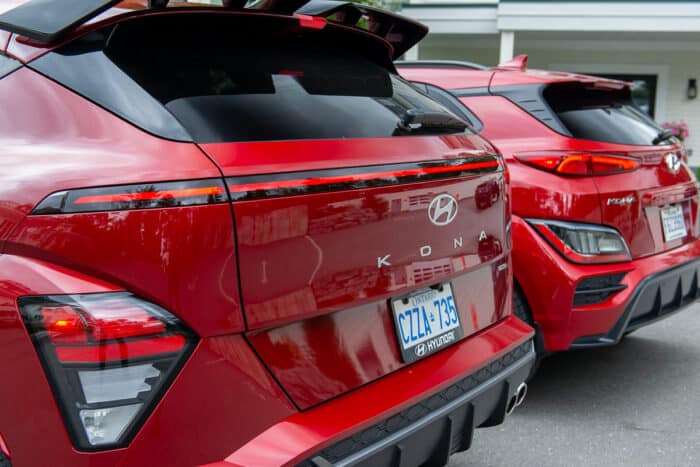
Perhaps a bit more subtle are the parametric-styled Kona sides; more angular-looking surfaces give the new Kona a more distinct design than 2023.
Other updates include a lower rear bumper design, a larger tailgate with chrome moulding nestled into the rear spoiler, and more chrome bits from the belt line to the spoiler. This gives the redesigned Kona a sportier look.
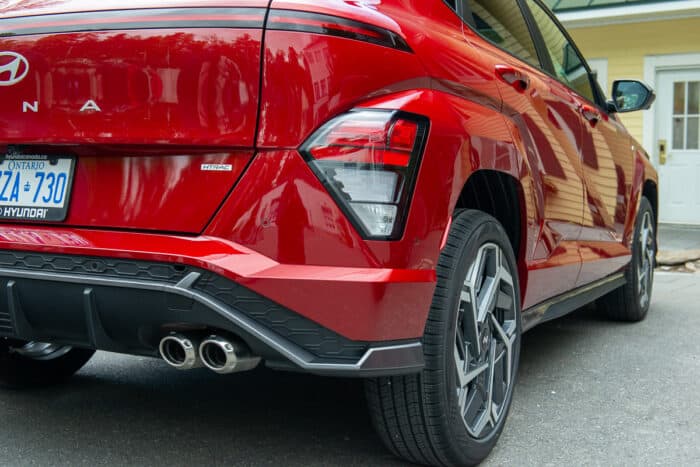
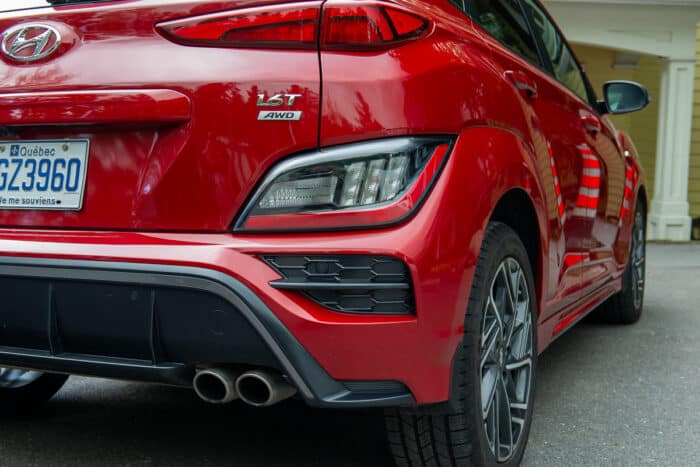
Powertrains: Goodbye Kona N, Hello Kona Electric
The two internal combustion engines carry over from 2023 — including the standard 2.0L and the 1.6L turbo for the N-Line grades. Power figures remain the same as well.
We recently tested the 1.6L turbo Kona – read our full 2024 Hyundai Kona N-Line [1.6L Turbo] first drive review here.
Departure of the underrated Kona N
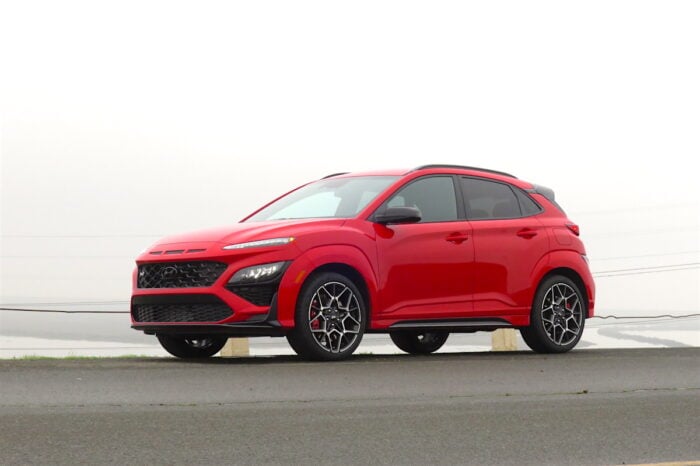
The sad news is less that the very short-lived Kona N isn’t likely in the cards anytime soon, but the reason it’s going extinct is not enough demand to justify production. We can understand the Kona N was a highly niche offering and that subcompact crossover shoppers at large aren’t seeking a near 300-horsepower performance machine built for the track. But we drove the 2022 Kona N at the Sonoma Raceway in California in late 2021 and absolutely loved it, so it’s a bit personal.
Kona goes electric
Otherwise, the big news — and something the small CUV shoppers will value — is the addition of the new Kona Electric we previewed in Berlin.

The zero-emissions variant arrives in early 2024, offering an estimated 260 miles of electric range and 201 horsepower with the 64.8 kWh battery in 2WD form. The 48.6-kWh battery provides around 133 horsepower. As for charging duties, Hyundai expects an approximately 10% to 80% charge in 43 minutes with fast-charging capability. We’ll have full Kona Electric specs when it hits the market.
Takeaway: 2024 Kona improvements in (almost) all the right places
The new Kona’s exterior looks are drastic, dynamic, and dramatically better than before. The seamless horizontal full-line LED DRL is unlike anything we’ve seen on a subcompact crossover. The futuristic look is a nice departure from a sea of homogenized-looking small haulers.
The revamped interior goes beyond just adding more tech (like the more prominent, standard 12.3-inch touchscreen); Hyundai took advantage of the enlarged dimensions by increasing rear legroom and adding innovative storage areas while improving trunk space significantly compared to 2023.
The 1.6L turbo-powered Kona with 190 horsepower remains the most potent in its class, with the more fuel-efficient 2.0L still in the mix. But we say goodbye to the 276 horsepower Kona N (unless something changes in the future), making room for, of course, something more electrified and welcomed by the masses.
Here’s a look at all the current Hyundai SUVs and crossovers on the market.
- 320
- 460shares

